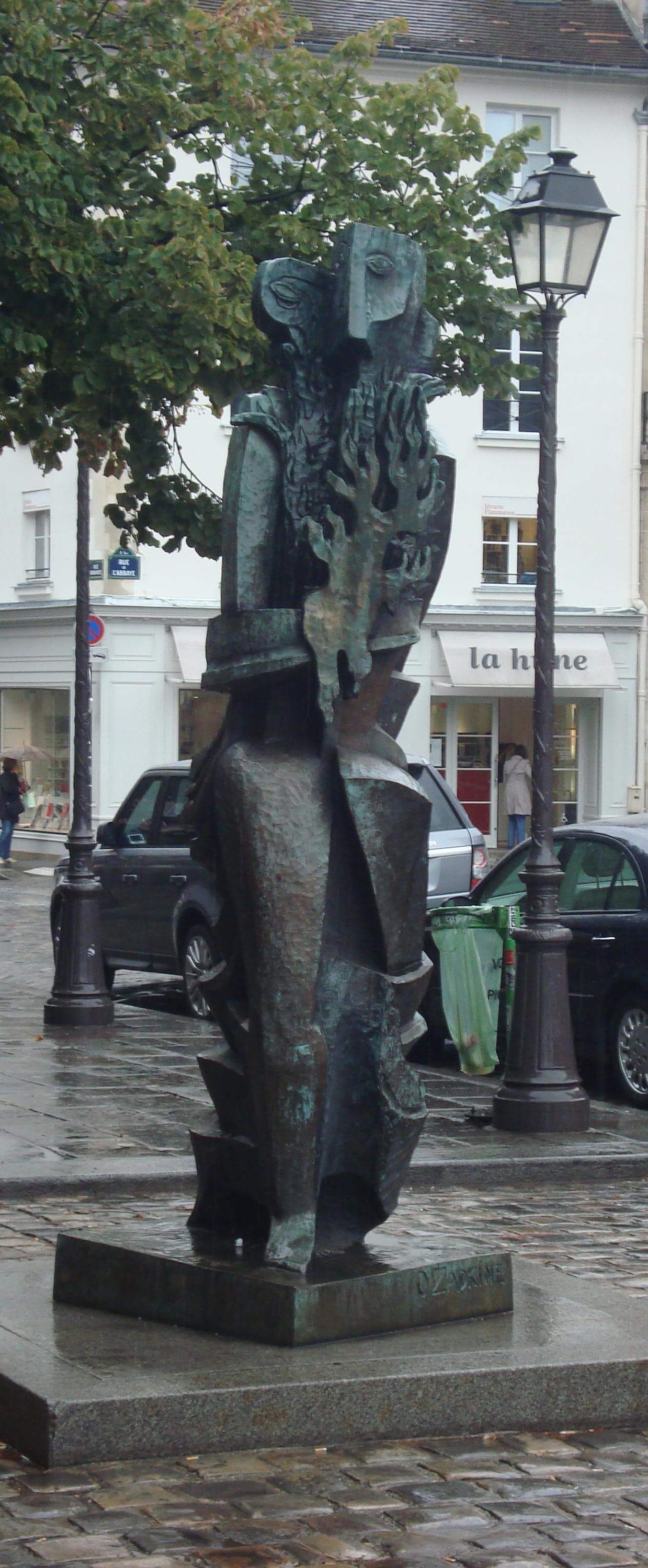
In her research on leadership in organizations, Patricia Pitcher speaks of the drama of leadership, its dreams, realities and illusions (Pitcher, 1996). In the unfolding of this drama, she identified three actor archetypes essential for success in any organization or team – the Artist, the Craftsman and the Technocrat. Artists have the intuition, imagination, and emotional connectivity to create stunning visions; Craftsmen create work products through the slow and methodical accretion of knowledge and skill, trial and error, and pass that along through mentorship to their apprentices; Technocrats are the fact-based technicians for whom there is only one “right” way – their skill is technical mastery (Op cit., pp. 20-21 for a detailed explanation of her approach). All three play an important role in organizational life and health. We need the corporate strategists (Artists), mid-level managers (Craftsmen) and accountants or architects (Technocrats). I had an opportunity to use this lens in thinking about climate change adaptation leadership at a recent international conference.
The topic of leadership for climate governance was explored during a panel discussion chaired by Carina Keskitalo and Sander Meijerink at the annual general conference of the European Consortium for Political Research (ECPR) in Bordeaux, France. Academics from across Europe converged on the University of Bordeaux to discuss everything from organized crime and political action, to the politics of unsustainability, and of particular interest to me, environmental governance.
The panel discussion in which I participated revealed that there are a host of actors that are important for effective environmental governance generally, and climate governance more specifically. We identified the importance of charismatic leaders, policy entrepreneurs, change agents, scale-crossing brokers, boundary workers, opinion leaders, and super-agents, to name a few. Is there a way to meld this into a coherent research agenda for climate change adaptation leadership? Can such an agenda capture the variety of skills and roles assumed by the actors described above?
We were challenged to consider the following:
Adaptation to the consequences of climate change – and not only mitigation of emissions – will be necessary as a result of impacts on among other things sea level, water systems and through extreme events. Mitigation and adaptation alike are important multi-level governance issues, that may be dealt with on local to international levels, and often require interaction among levels and different types of actors.
We were also asked to reflect on two key questions:
- What are the specificities of leadership for climate change adaptation as compared to other leadership challenges: Do we need new leadership theories for tackling adaptation issues or can we basically apply existing leadership concepts?
- Do we need different leadership styles and strategies within different institutional contexts (countries)?
Our case studies from Switzerland, Germany, the Netherlands, and Canada explored the issue of leadership in a full range of multi-level approaches, from the national to the sub-national, and community levels. It was interesting to note that we all saw the usefulness of Uhl-Bien and colleague’s Complexity Leadership Theory (CLT) as a way to make sense of leadership for climate change adaptation; this research has identified three “entangled” roles of leadership – adaptive, administrative and enabling (Uhl-Bien et al., 2007). At the same time, we recognized that climate change adaptation leadership should be considered as a distinct area of research. Meijerink and Stiller have developed an integrative perspective that uses ideas of policy, connectivity, complexity, and sustainability leadership to stress that: “Each function requires the execution of specific leadership tasks which can be performed by different types of leaders, such as positional leaders, ideational leaders, sponsors, boundary workers, policy entrepreneurs or champions” (Meijerink and Stiller, 2013: 240).
Johann Dupuis presented the results of his work on adaptation policy innovation, as reflected in natural resources and disaster risk management. In the case of Switzerland, he observed that most adaptation policy change is driven by administrators, with weak stakeholder involvement and the perceived political view that adaptation is not, in and of itself, a policy challenge.
Sabina Stiller and Sander Meijerink looked at climate change adaptation networks in Northern Hesse, Germany, through the lens of CLT and their recent model on climate change adaptation leadership (Meijerink and Stiller, 2013). Specifically legislated climate adaptation officers (CAOs) became “agents with a mission” (Stiller and Meijerink, 2013). The challenges faced by such actors in this particular context were validated, and can serve as an exemplar for jurisdictions planning a similar approach. Lessons learned with respect to dissemination of information on the imperative for climate change adaptation, the connective nature of CAOs, and the important next step – enabling adaptation action, are all relevant to other contexts.

Finally, I presented my work with colleagues in the Niagara Region and the challenges of sustaining leadership for participatory community climate change adaptation over the long haul. Through a research focus on how individuals progress from research informants to engaged actors, catalyzing agents, and empowering leaders, and their relative positions of power, our research identified the importance of super-agents (Dengler, 2007). These individuals have key information in the science knowledge space, as well as essential mediation skills, to bridge this knowledge with the local and policy knowledge spaces.Catrien Termeer presented the results of her and her colleague’s work on the Dutch Delta Program. The Delta Program is aimed at addressing institutional challenges for water governance at the sub-regional level, to promote adaptation for water safety, freshwater, spatial development and planning. Using CLT, their work emphasized the importance of change alliances, as a counterbalance to more traditional administrative leadership.
Importantly, a traditional view of adaptation policy, driven by a technocratic, administrative leadership style, was seen as too simplistic by all the contributors to the panel session. Our collective work indicates that artistry and craftsmanship are important, yet often neglected aspects of leadership. We identified that policy entrepreneurs, agents with a mission, change alliances, and super-agency all illustrate that, to be effective, policy and strategy must be “crafted” (Mintzberg, 1987). As Pitcher (1996:194) has said:
Programs are contradictory, redundant, out of date, and not because we’ve lacked Artists and Technocrats, but because we’ve lacked Craftsmen. One of the leitmotifs of craftsmanship is gradual adaptation. Things don’t get out of date, because their utility is constantly reassessed. If the tool gets dull, sharpen it. The craft attitude is to cut off the branch to save the tree. Regular pruning. Of course, to prune a tree, you have to know what you’re doing. If you cut too many branches, the tree won’t grow strong and straight. It will die.
Current research on innovation and sustainability seems to support this. “In large, continuously innovating firms, the strategic apex sets strategic direction, but innovation occurs at the front lines, on the shop floor, or in small designated teams” (Westley et al., 2011: 767). As part of my work with ECGG, I hope to continue this research to uncover the complexity and variety of approaches for more effective climate change adaptation leadership. What do you think of CLT as an organizing framework? What have been your adaptation leadership experiences, challenges and innovative solutions? Please feel free to contact me at b3may@uwaterloo.ca to start a discussion.
References
Dengler, M. (2007). Spaces of power for action: Governance of the Everglades Restudy process (1992-2000). Political Geography. 26: 423-454.
Meijerink, S. and S. Stiller (2013). What kind of leadership do we need for climate adaptation? A framework for analyzing leadership objectives, functions, and tasks in climate change adaptation. Environment and Planning C: Government and Policy. 31: 240 – 256.
Mintzberg, H. (1987). Crafting strategy. Harvard Business Review. July-August. Reprinted 2001.
Pitcher, P. (1996). Artists, Craftsmen and Technocrats: The Dreams, Realities and Illusions of Leadership. Stoddart, Toronto.
Stiller, S. and S. Meijerink (2013). Leadership within regional climate change adaptation networks: the case of climate adaptation officers in Northern Hesse, Germany, paper, presented at the ECPR General Conference, Bordeaux, 4-7 September, panel ‘Climate governance: a leadership perspective’.
Uhl-Bien, M., R. Marion, and B. McKelvey (2007). Complexity Leadership Theory: Shifting leadership from the industrial age to the knowledge era. The Leadership Quarterly. 18: 298-318.
Westley F., P. Olsson, C. Folke, T. Homer-Dixon, H. Vredenburg, D. Loorbach, J. Thompson, M. Nilsson, E. Lambin, J. Sendzimir, B. Banerjee, V. Galaz, S. van der Leeuw (2011). Tipping Toward Sustainability: Emerging Pathways of Transformation. AMBIO: A Journal of the Human Environment. 40(7): 762-780.